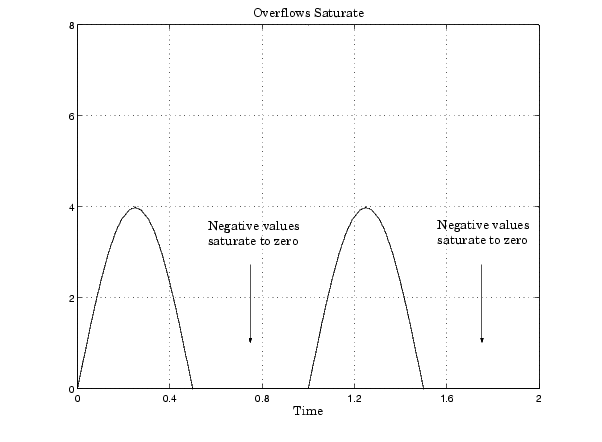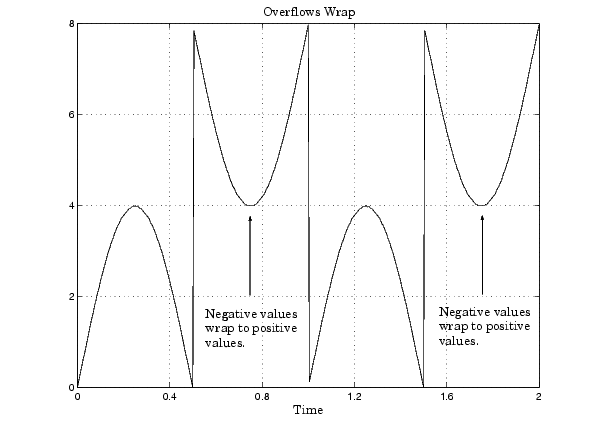

| Fixed-Point Blockset |   |
Saturation and Wrapping
Saturation and wrapping describe a particular way that some processors deal with overflow conditions. For example, Analog Device's ADSP-2100 family of processors supports either of these modes. If a register has a saturation mode of operation, then an overflow condition is set to the maximum positive or negative value allowed. Conversely, if a register has a wrapping mode of operation, an overflow condition is set to the appropriate value within the range of the representation.
Example: Saturation and Wrapping
Consider an 8-bit unsigned word with radix point-only scaling of 2-5. Suppose this data type must represent a sine wave that ranges from -4 to 4. For values between 0 and 4, the word can represent these numbers without regard to overflow. This is not the case with negative numbers. If overflows saturate, all negative values are set to zero, which is the smallest number representable by the data type. The saturation of overflows is shown below.

If overflows wrap, all negative values are set to the appropriate positive value. The wrapping of overflows is shown below.

 | Limitations on Range | Guard Bits |  |